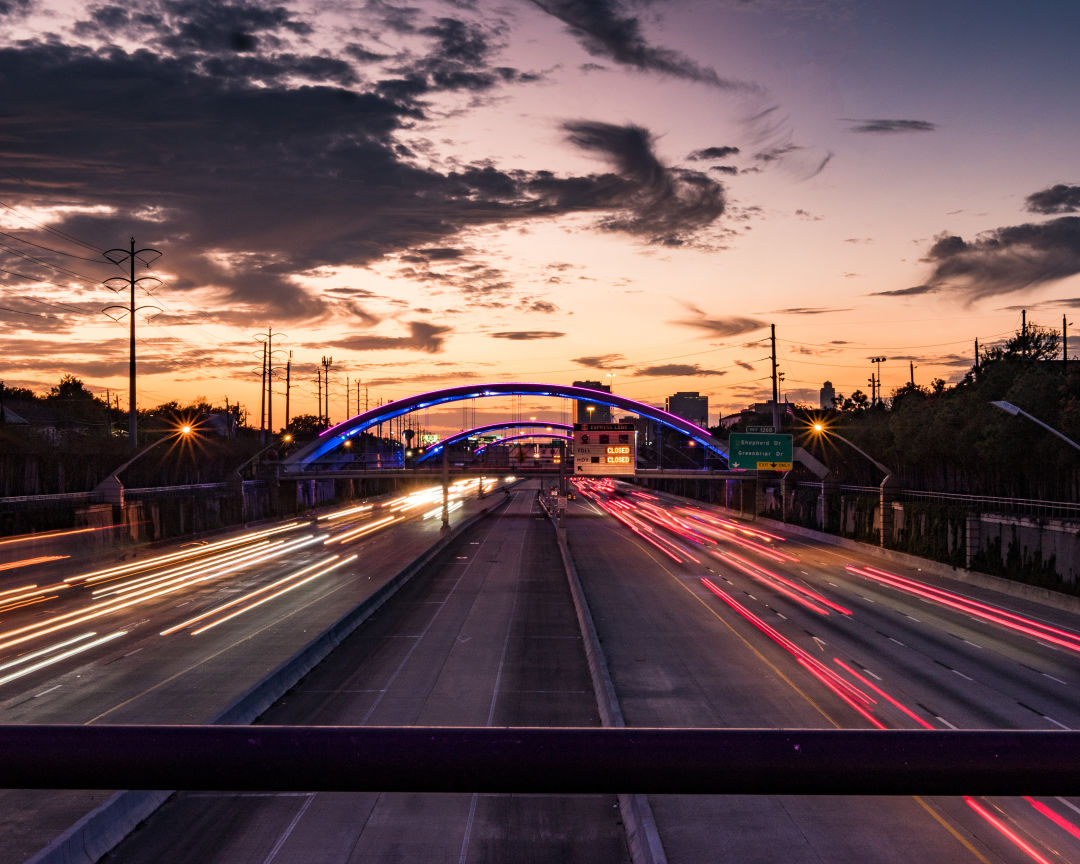Will Carpooling Make Traffic Better?

A new study says the average Houstonian spends about 75 hours in traffic each year.
THERE WAS A COLLECTIVE SIGH last summer when a new study revealed the average Houston commuter wastes some 75 hours—the rough equivalent of two weeks’ vacation—gridlocked in traffic each year, cursing at the sky and pretending to enjoy podcasts. What could possibly be done about this?
One easy answer, transportation advocates say, might be good ol’ carpooling. Add just one extra rider to each vehicle on the road, and said road immediately becomes twice as efficient. Yet the most recent census data reveals Houstonians are carpooling at some of the lowest rates in nearly a decade—around 10 percent.
According to Kyle Shelton, deputy director at Rice’s Kinder Institute for Urban Research, we’ve abandoned one of the simplest solutions to congestion for fairly obvious reasons. For one, driving alone is cheap: the sticker price on automobiles has remained stagnant, while gas prices have fallen. The alternative can also be a pain in the butt.
“One of the reasons people are attracted to the personal vehicle is more choice and independence,” he explains. “Carpooling is kind of the opposite, so, for a lot of people, there’s that psychological barrier.”
Dire circumstances have pushed us across that barrier before. During the rubber shortages of WWII, for example, an infamous government poster proclaimed, “When you ride alone you ride with Hitler!” Later, amid the oil crisis, President Jimmy Carter beseeched Americans to cram a neighbor or coworker into the back of the station wagon; sky-high gas prices helped push carpool rates to 20 percent, a number never seen before or since.
This was the climate in which Houston’s first HOV lanes were added to I-45, I-69, and US 290 back in 1984 as an incentive for commuters to add a passenger and avoid the congested main lanes. The METRO Star Vanpool, which gathers groups of 15 commuters into a shared vehicle, arrived a decade later. Even today additional managed lanes are part of both the METRONext bond issue and the controversial I-45 expansion project. The region’s highways will soon have more carpooling capacity than ever—it’s just a question of persuading drivers to use it in an era of cheap gas and urban sprawl that necessitates longer commutes.
We may, however, be arriving at a tipping point. Forecasts predict the region will surpass 10 million residents by 2040, and roughly 90 percent of Houstonians currently commute using private vehicles, either alone or in a group. Shelton says promoting carpooling as an attractive choice might be among the best ways to make increasingly crowded roads more efficient as the city continues to expand buses, trains, and bike lanes as viable, compelling alternatives to the automobile. This more crowded future might encourage even the most stubborn car-lovers to bear the cost to their personal convenience.
“The beauty of our market-based system is that they make the choice they’re comfortable with,” Shelton says. “You will always have the choice to drive yourself, but the carrot for HOV lanes is faster movement on these highways, and as long as you follow the rules, you can do it for free.”




